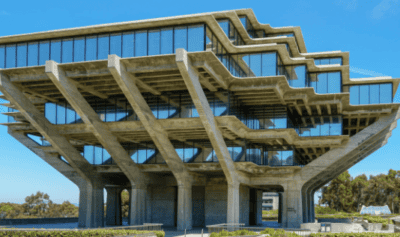Brutalist architecture, known for its bold, unapologetic presence, emerged in the aftermath of World War II, achieving its zenith in the 1960s and 70s.

The Origins and Evolution of Brutalism
The true beginnings of Brutalism trace back to Sweden in 1949, credited to Hans Asplund who coined the term to distinguish modernist Swedish architecture from the international style. Despite common belief, Le Corbusier’s influence, particularly his concept of “beton brute” or “raw concrete,” came later and did not directly inspire the Brutalist name.
The movement found its way to Britain, where it was embraced by architects Alison and Peter Smithson, marking the start of what we recognise today as Brutalism. The Historic England Blog has a guide that explains Brutalism.
Key Characteristics of Brutalist Architecture
Brutalist architecture is defined not just by its aesthetic but by a deep-rooted ethical philosophy. Early British Brutalists and critics like Reyner Banham argued that Brutalism was more than a style – it was a commitment to using raw materials to construct buildings that resonate with truth and integrity.
This ethos led to the creation of structures that starkly contrasted with their environments, often using concrete as their primary material to achieve a look that was both monumental and provocative. For those interested in the practical applications of concrete Stroud, similar to those used in Brutalist projects, specialists such as https://www.monstermixconcrete.co.uk/concrete-stroud/ offer a glimpse into the modern use of this versatile material.

The Controversy and Legacy of Brutalism
Public reception of Brutalist architecture has been polarised since its inception. Iconic structures like the Boston City Hall embody the style’s ambitious aims but also highlight its contentious nature. As Brutalist architecture experiences a resurgence, it invites a re-evaluation of its impact beyond mere aesthetics, acknowledging its role in shaping societal values.
